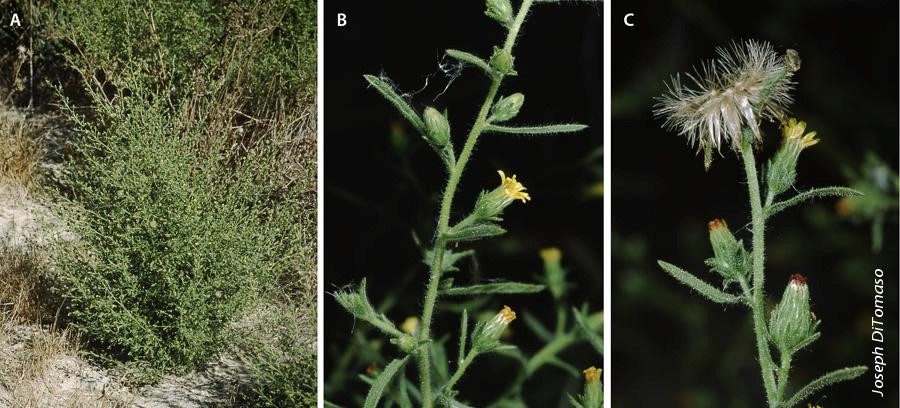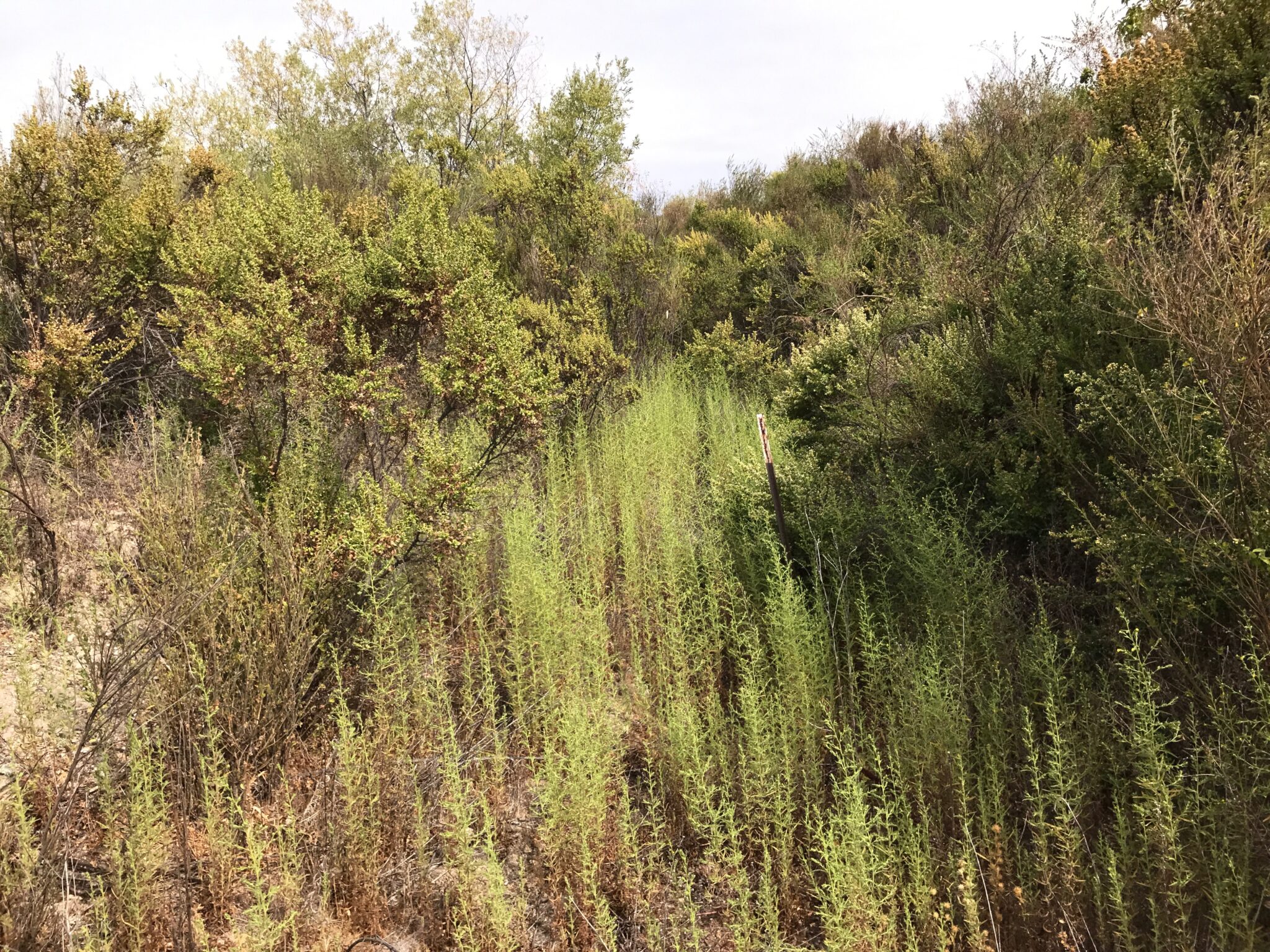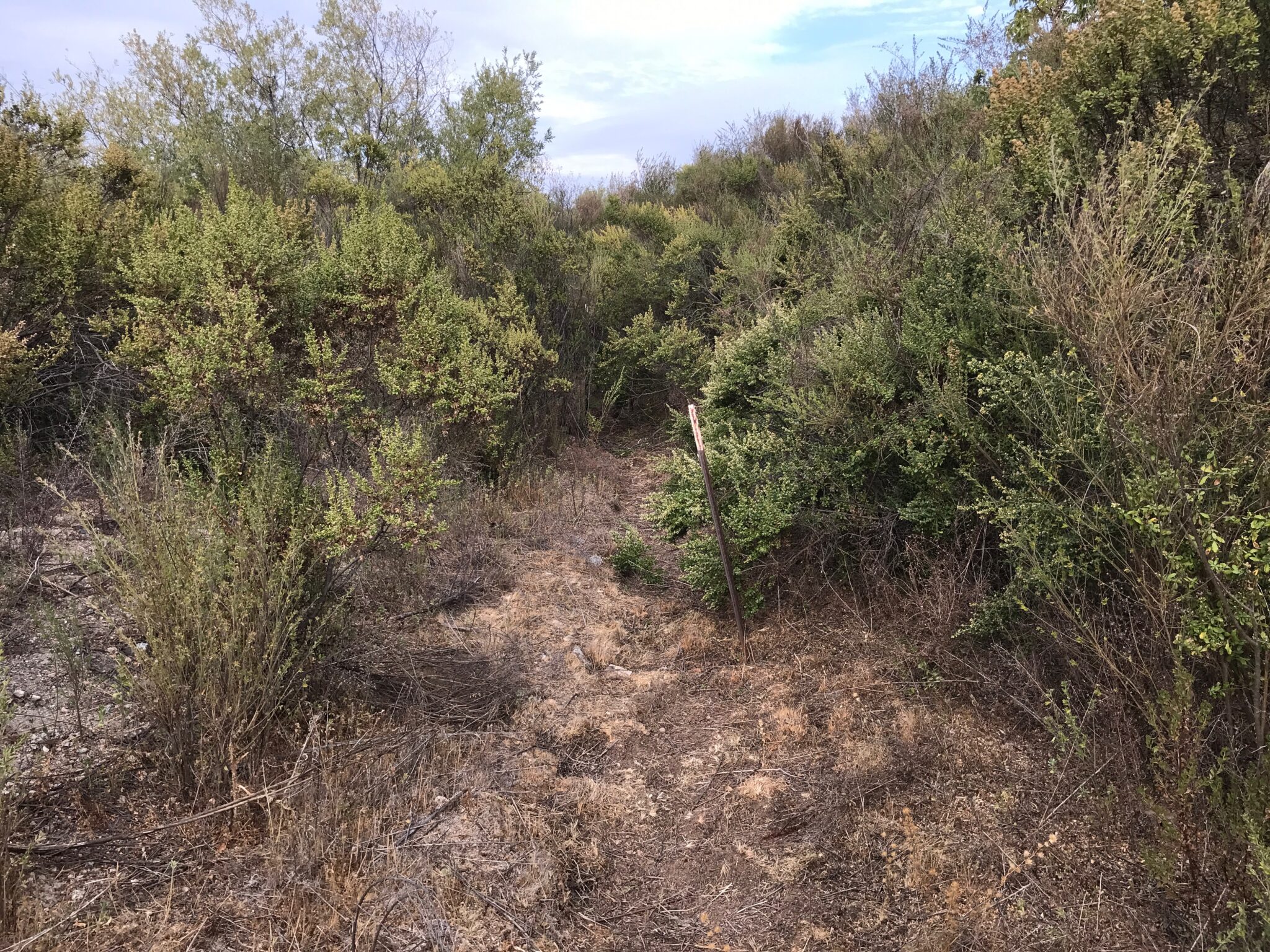Invasive stinkwort. Photo by Joseph DiTomaso.

Before & After: Preventing the Spread of Invasive Stinkwort
February 8, 2022
By Jackson Brooke, Restoration Manager
Native to the Mediterranean and Middle East, Stinkwort (Dittrichia graveolens) is a relatively new invader of California and was first reported in Santa Clara County in the 1980s. It has spread aggressively since then and is now found in a majority of counties. Stinkwort’s aromatic leaves have sticky hairs covered in resin, which can cause allergic dermatitis in humans, can be poisonous to livestock, and are not considered appetizing to wildlife. The plant can grow to about 2.5 feet tall and sprouts small yellow and reddish flowers in the late summer and fall, which puff open with white hairs when they’re ready to seed. An unusually timed winter annual, stinkwort produces seeds from September through December.
Stinkwort likes to invade open, sunny areas such as grasslands where it can outcompete native species. Outside of The Santa Lucia Preserve, you can spot stinkwort growing along roadsides, in overgrazed rangelands, and in other disturbed areas that have since been neglected. Seeds are spread by the wind, on motor vehicles and equipment, and on the fur and feathers of animals. Part of what makes stinkwort so invasive is it’s extremely high seed viability, meaning that about 90% of its seeds are capable of germinating when they disperse from the plant.
Luckily, we haven’t found a concerning amount of stinkwort on The Preserve, but it is featured on the Conservancy’s Zero Tolerance List in order to prevent its spread.
The Quarry
One area that has been invaded on The Preserve is the Quarry off of the Cantera Trail, between Rancho San Carlos Road and Vuelo de las Palomas. At the turn of the 20th century, this area was quarried to extract Carmel stone for the construction of the Gatehouse and other structures on site. It was disturbed again in 2016 when a bulldozer line was put through it to help manage the Soberanes Fire. Since then, stinkwort has successfully established and is now found throughout a large portion of the 6 acre area.

BEFORE: We’ve been hand removing stinkwort from the Quarry for the past three years, making progress slowly but surely. In 2020, the field crew spent 3 days tackling each and every weed, and this is the scene we arrived at the following year.

AFTER: We are proud to report that we’re getting a handle on the stinkwort in this area. When we returned in 2021, it only took 3 hours. We will continue efforts in this area, which is also suffering from French broom encroachment.
Our goal is to prevent the further spread of stinkwort on The Preserve so that our native plants can properly support the unique habitats found in the Central Coast. The best way to help the Conservancy manage invasives on the Preserve is to review our 2021 Invasive Plant Management Guide and notify the Conservancy any time you spot a Zero Tolerance Species. Whether it’s on your Homeland, along a trail, or on the golf course, please contact me at [email protected] or (831) 402-9499.
This is the fourth post in our before and after photo series. In previous blog posts, we discussed our work hand pulling French broom, examined our poison hemlock mowing treatments, and tackled teasel. If you’re curious about a particular invasive species and how we manage it on The Preserve, please don’t hesitate to reach out!